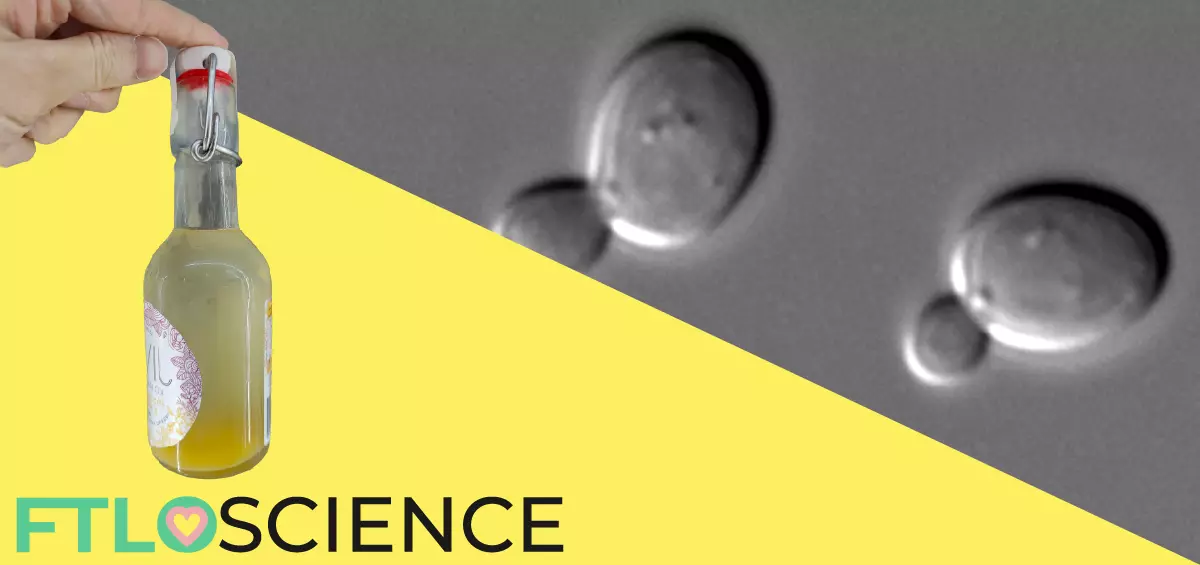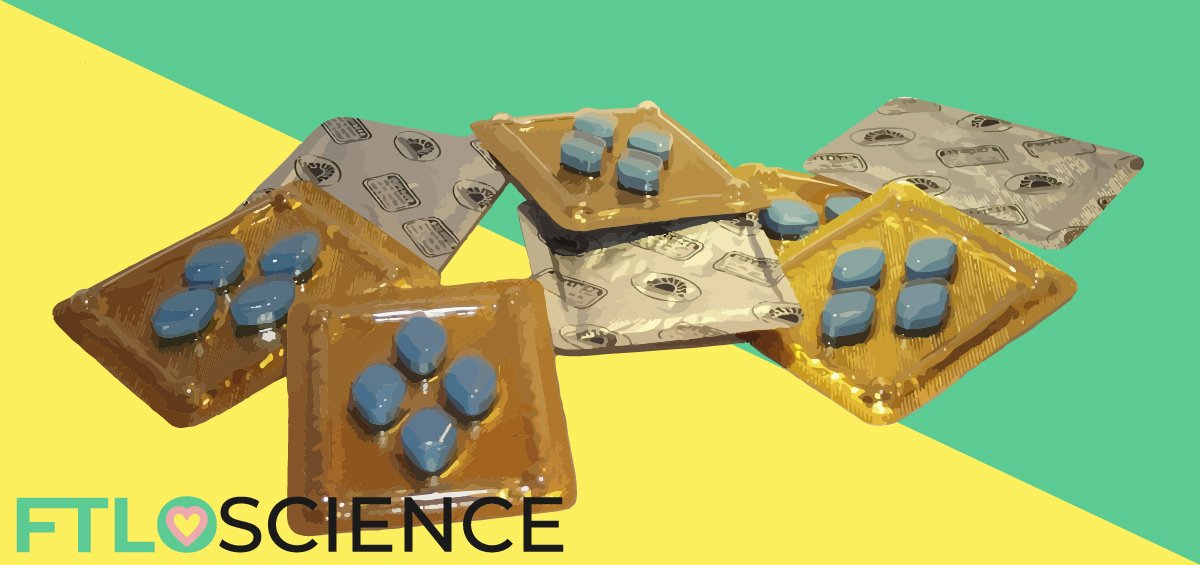“Up for some tea? Great, we’ll need yeast and bacteria.” It might sound gross, but many people enjoy their tea this way. Kombucha tea is a sweet, sparkly, and slightly acidic drink made from a culture of live microorganisms. In this article, we’ll look into the chemistry of kombucha, from the microbial processes to the food safety protocols that make the drink safe.
Kombucha is a fermented drink made from tea, sugar, yeast, and bacteria. Yeast cells convert sugars to alcohols, while bacteria turn the alcohols into acids. These chemical reactions give the popular drink its sweet, slightly acidic, and fizzy profile. While kombucha has no proven health benefits, it is safe to drink despite the high microbe content.
How Yeast and Bacteria Make Kombucha
SCOBY
Symbiosis involves two different species working together in a mutually beneficial manner. Making kombucha requires a symbiotic culture of bacteria and yeasts (SCOBY).
A good kombucha brew begins with mixing tea, sugar, and SCOBY in a clean container, which are key ingredients to begin fermentation chemistry! But first, let’s look at what types of bacteria and yeasts are involved.
Bacteria are cells without a nucleus (prokaryotes) belonging to the bacteria kingdom. Yeasts are cells with a nucleus (eukaryotes) of the fungi kingdom.
Several strains of bacteria and yeast used in SCOBY are listed in the tables below, along with where you can find them. The most common strains for kombucha are highlighted in bold:
| Microbial Strain | Type | Common Source |
|---|---|---|
| Lactobacillus nagelii (Lactic acid bacteria) | Bacteria | Milk, sugary food |
| Gluconacetobacter (Acetobacter) | Bacteria | Sour juices, ripe fruits |
| Gluconobacter | Bacteria | Flowers,fruits |
| Komagataeibacter | Bacteria | Vinegar, sugary food |
| Brettanomyces bruxellensis | Yeast | Wineries |
| Candida stellata | Yeast | Overripe grapes |
| Schizosaccharomyces pombe | Yeast | Soil, sugary/alcoholic drinks |
| Torulaspora delbrueckii | Yeast | Grapefruits, berries |
| Zygosaccharomyces bailii | Yeast | Wine, tea, vinegar |
The names sound intimidating, but these bacteria and yeast cells are little factories that create the flavors and nutrients of kombucha. Moreover, these microorganisms have fermented food and alcoholic beverages as early as ancient Egypt and China.
Lactic acid bacteria from animal milk helped create the first yogurts over 7000 years ago, while Brettanomyces yeast strains had a hand in making the first ales in 17th century Britain.
Symbiosis Produces Kombucha Chemicals
Bacteria and yeasts work in a mutually supportive manner to make kombucha. Yeasts break down chemicals into food for bacteria. Bacteria, in turn, remove toxins from the chemical reactions so the yeast can thrive. This symbiotic relationship also produces other by-products that make up the nutrients and flavors of kombucha.
Some of these by-products form a gelatinous layer usually seen on the surface of the brew. It looks like a mushroom, but it’s not. The floating blob or pellicle is a cellulose film and acts as the culture medium where bacteria and yeast stay. Like a sourdough starter, this pellicle can keep making kombucha as long as food is available.
Now, let’s take a closer look at the critical chemical reaction behind SCOBY and kombucha: fermentation.
Chemical Processes in Kombucha
Alcoholic Fermentation by Yeast Cells
Kombucha fermentation involves two steps: alcoholic fermentation followed by acetic acid fermentation.
We add sugar to kombucha brews to kick start the reaction. This as food for yeasts. First, yeasts in SCOBY break down sucrose (table sugar) into smaller glucose and fructose molecules.
Next, these yeasts ferment glucose and fructose to produce ethanol and carbon dioxide. That’s right, most batches of kombucha contains traces of alcohol. For this reason, children should avoid the drink (especially homemade concoctions).
It is important that the fermentation equipment is clean, as wild yeast strains can introduce alcohols other than ethanol into the mixture. Ingesting toxic alcohols like methanol can lead to serious health effects.
Mixed Acid Fermentation by Bacterial Cells
Bacteria in SCOBY can perform fermentation of their own, converting alcohols from yeast into organic acids. Interestingly, different strains of bacteria produce different acids.
Bacteria strains like acetobacter and gluconobacter convert the remaining sugar and alcohols from yeast into acetic acid, gluconic acid, and other desirable acids in kombucha. Once the alcohol content goes below 0.5%, it is considered a non-alcoholic drink.

The graphic above shows possible chemical pathways bacteria use to break down glucose and fructose. Acetobacter strains tend to ferment glucose and ethanol more efficiently, producing pure organic acids. Gluconobacter sometimes performs partial fermentation, which means more sugars and ethanol is left over.
Different combinations of yeast and bacteria alter the chemical composition and the resulting taste of kombucha.
| Taste | Source |
|---|---|
| Sour/Tangy | Organic acids |
| Fizzy | Carbon dioxide |
| Sweet | Leftover or added sugar |
| Alcohol | Leftover ethanol |
Chemical Composition of Kombucha
The overall fermentation process produces vitamins, minerals, and other nutrients that we need in our diet. Food scientists reviewed the significant nutrients in kombucha tea and noted that gluconic acid—a good antioxidant—is present in high concentrations.
Although the exact chemical composition of kombucha is not well studied, different chemical by-products have been characterized. We list the chemicals found in kombucha below:
| Chemical | Compound Type | Source |
|---|---|---|
| Acetic acid | Organic acid | Bacteria |
| Gluconic acid | Organic acid | Bacteria |
| Glucuronic acid | Organic acid | Bacteria |
| Citric acid | Organic acid | Bacteria |
| Lactic acid | Organic acid | Bacteria |
| Malic acid | Organic acid | Fruit |
| Tartaric acid | Organic acid | Fruit |
| Malonic acid | Organic acid | Bacteria |
| Oxalic acid | Organic acid | Fruit |
| Succinic acid | Organic acid | Bacteria |
| Pyruvic acid | Organic acid | Bacteria |
| Usnic acid | Organic acid | Bacteria |
| Sucrose | Sugar | Additive |
| Glucose | Sugar | Yeast |
| Fructose | Sugar | Yeast |
| Ethanol | Alcohol | Yeast |
| Glycerol | Alcohol | Yeast |
| Methanol | Alcohol | Yeast |
| Vitamin B | Vitamin | Tea leaves |
| Vitamin C | Vitamin | Tea leaves |
| Proteins | Amino acids | Unknown |
| Purines | Organic compound | Unknown |
| Pigments | Organic compound | Unknown |
| Enzymes | Enzyme | SCOBY |
| Tea polyphenols | Organic compound | Tea leaves |
Despite lacking scientific evidence, many regard kombucha as a cure to many diseases. We don’t know if these chemicals have medical benefit (I guess ethanol is a good antiseptic?) since kombucha has never been tested in a clinical settings.
Some question the safety of using bacteria and yeasts to produce food with unclear chemical compositions. How can we ensure the kombucha we buy (or brew) is safe to drink?
Safe Brewing With Bacteria and Yeast
Commercial Kombucha
The most common recipe for kombucha tea involves adding 0.5 g of tea leaves and 5 g of sucrose for every 100 ml of boiling water. Boiling water helps to sterilize the mixture and the container. After filtering the leaves, the solution is cooled to 20 °C before 3 g of SCOBY is added.
A small amount of previously prepared kombucha tea is sometimes added to make the pH acidic, preventing unwanted microbes from growing in the brew. The brew is incubated for 7–14 days between 18 °C–26 °C to allow fermentation to take place before filtering the liquid.

The Food and Drug Administration (FDA) categorizes fermentation with kombucha as a specialized process. It requires all distributors or food service operators to submit a food safety plan to FDA before producing commercial batches of the drink.
When buying kombucha drinks, make sure to look for HACCP labels. HACCP tags prove that the product follows an approved plan for hazard analysis and critical control points.
Making it Safely at Home
Kombucha can be fermented at home using store-bought SCOBY and sweetened tea. To ensure a safe preparation and consumption process, you can use the commercial recipe, but take not of the following conditions:
- Fermentation Time
The FDA Food Code recommends fermenting kombucha in 10 days or less. Fermentation causes a build-up of organic acids, which increases the sour taste in the drink. Apart from being unpalatable, high concentrations of acid in kombucha can make cause digestive issues.
A long fermentation period also increases the risk of other microbes entering and contaminating the brew. Bacteria grow very quickly in the nutrient-rich environment created by SCOBY.
- Temperature
You can ferment kombucha at room temperature, but be sure to sterilize all the equipment you use beforehand. Pouring boiling water over the glassware and utensils works to kill stray microbes.
If you’re still worried, you can heat your kombucha just before drinking. This will also kill any residue SCOBY from your brew, which isn’t a bad thing (despite what you might read on the internet). Always discard the batch if molds form or discoloration occurs.
- pH
Keeping the pH of the brew at acidic levels 4.2 slows down the the growth of most pathogens will keeping SCOBY active. You can measure pH using a pH meter or litmus paper. Kombucha mixtures usually have a starting pH of 5, which decreases as fermentation takes place. Try not to let this pH fall below 3.
Should You Drink Kombucha?
Kombucha is sold in many stores and is a popular experiment to try at home. It has been around for several centuries and continues to grow in popularity. However, we don’t fully understand the chemical composition of kombucha and the long-term effects of drinking it.
Furthermore, many fermentation processes and interactions between bacteria and yeasts in SCOBY are complex and difficult to control. It would be wise to consume kombucha in moderation, buying HACCP approved products and following safe preparation methods.
About the Author

Marjory was a junior science writer at FTLOScience from October to November 2022.




